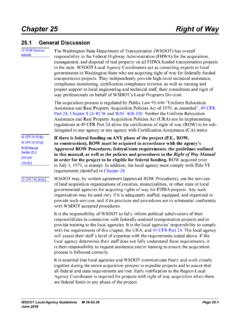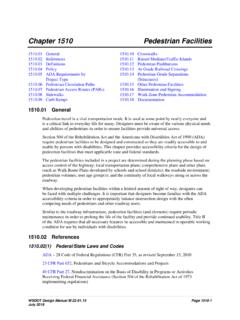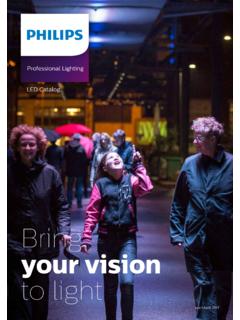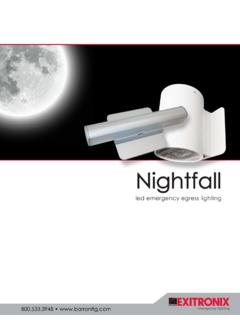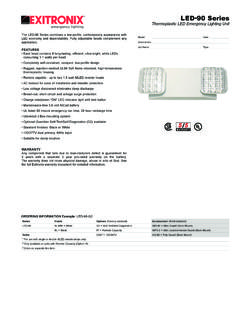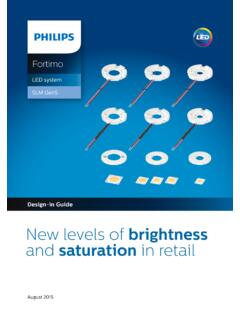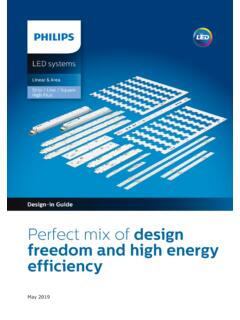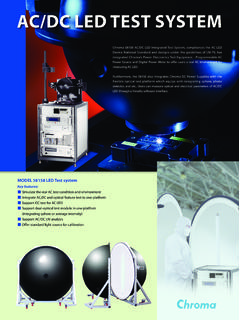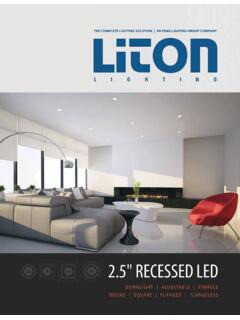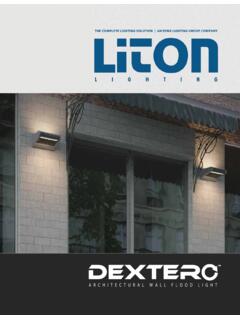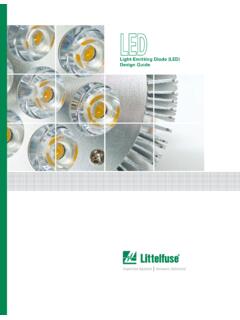Transcription of LED Adaptive Lighting and Illumination Reform
1 BackgroundOriginal planPractical design solutionLED Adaptive Lighting and Illumination reformBeforeAfterPRACTICAL DESIGN AT WORK OPERATIONSWSDOT currently spends approximately $ million per biennium on power usage for Illumination purposes. In keeping with our continuous improvement goal, WSDOT is continually looking for ways to be more efficient with our resources. The Lighting industry has changed dramatically in recent years. WSDOT has been evaluating light - emitting - diode (LED) luminaires for the past several years and until recently could not find a suitable replacement fixture for the High Pressure Sodium (HPS) luminaires we currently use.
2 In the last year or two, a few manufacturers have improved their fixtures to the point where the LED fixtures are nearly comparable in light output to the HPS luminaires that WSDOT uses for roadway year WSDOT spends close to $ million on Illumination system maintenance and operations, with nearly $4 million (73 percent) of the cost going toward electricity costs. In addition, nearly $8 million per year is needed for life cycle replacement in order to effectively maintain the existing 60,000 light fixtures contained within the 3,100 Lighting systems owned by WSDOT.
3 Assuming we need each existing light fixture, the upfront cost for a complete conversion to LED is estimated to exceed $50 million depending upon timing, pace and resources necessary for a large-scale conversion. Also, with electricity rates in Washington state averaging less than 7 cents/KWh, timing a large-scale replacement with the market cycle is critical to maximizing the return on investment. After examining these factors, it became apparent that WSDOT needed a more sustainable and practical approach to roadway April 2013, WSDOT began a pilot project to test the first light - emitting - diode (LED) Lighting system on a state highway.
4 The project installed new light fixtures with Adaptive Lighting , a system that allows crews to remotely adjust the light levels. The Adaptive Lighting system was a success, reducing power consumption 74 percent for the US 101 interchange with Black Lake Boulevard in Olympia. This led to an expansion of the pilot to include the US 101 and Cooper Point Road interchange located immediately to the east. Title VI Statement to Public: It is the Washington State Department of Transportation s (WSDOT) policy to assure that no person shall, on the grounds of race, color, national origin or sex, as provided by Title VI of the Civil Rights Act of 1964, be excluded from participation in, be denied the benefits of, or be otherwise discriminated against under any of its federally funded programs and activities.
5 Any person who believes his/her Title VI protection has been violated, may file a complaint with WSDOT s Office of Equal Opportunity (OEO). For additional information regarding Title VI complaint procedures and/or information regarding our non-discrimination obligations, please contact OEO s Title VI Coordinators, George Laue at (509) 324-6018 or Jonte Sulton at (360) with Disabilities Act (ADA) Information: This material can be made available in an alternate format by emailing the WSDOT Diversity/ADA Affairs team at or by calling toll free, 855-362-4 ADA(4232).
6 Persons who are deaf or hard of hearing may make a request by calling the Washington State Relay at innovative approach is an example of applying the practical design philosophy of focusing spending where it s most effective to operational programs. In addition to the power savings and reduced preventative maintenance savings presented by LED technology, this effort provides the foundation for exploring public acceptance of time-of-day reduced Lighting . Converting to LED, dimming, and on/off operation based on safety and mobility needs are just a portion of the issue.
7 WSDOT and the University of Washington have joined forces to develop a risk and safety based decision-making process to help prioritize Lighting , more than a dozen LED Lighting projects are now underway, providing each region with LED Lighting experience. Flexible and comprehensive procurement contracts through DES ensure WSDOT and other local agencies have access to the replacement LED fixtures and parts. These contracts, along with ongoing new products evaluation processes, make sure best of class materials, equipment and services are made widely available plus create continuous competition to drive down information on the LED pilot project can be found at.








